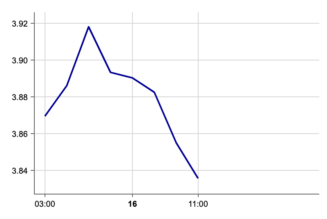Columnists
Beyond COP28, it is open competition between oil demands and renewables
Friday January 26 2024

President William Ruto during the National Statement at the World Climate Action Summit, COP28, Dubai. PHOTO | PCS
Last year’s COP28 climate forum was a fair arbitration between oil industry and competing renewable energy sectors. My understanding of the consensus is that the oil industry and renewables sectors will continue to invest within a managed energy transition, with government policies steering national and regional energy markets towards reduced carbon emissions and globally agreed climate targets while paying due attention to energy security.
Essentially, this opens up access to global funding for both oil and renewable energy sectors without recrimination, a situation that reduces activism in energy investments. And for energy economists, it will be a nightmare estimating future national and global oil demands which will additionally be impacted by the rate of renewable energy technology investments and uptake, besides the usual macroeconomics. Uncertainties or inaccuracies in global oil demand estimation can lead to oil price instability, with a negative influence on oil production investments.
Currently, the most imminent threat to oil demands across the world is the rate of electric vehicles (EVs) uptake. Unlike 10 years ago when EV technologies were nascent and experiencing doubts about their scalability, today EV unit costs continue to reduce, with mass uptake increasing especially in China, Europe, and the USA.
These countries are facilitating major production capacity expansion. At the current level of investments and research, EVs are expected to dominate the roads in 10 years.
In Kenya, we need to correctly estimate the pace of energy transition to allow the country to correctly plan its future petroleum and renewable infrastructure. Kenya, being mostly a second-hand vehicle market, will experience about a five-year lag relative to global EV uptake.
However, eventually internal combustion engine vehicles will give way to electric vehicles, a fact we need to consider when planning for petroleum and EV infrastructure.
Other areas of our energy markets that will be impacted by the energy transition are the potential replacement of fuel oil in thermal power generation and heavy industries, and the solarisation of diverse equipment that traditionally use petroleum products.
In respect of Turkana oil, we still have a window of about 15 years to monetise the oil resources to earn or save foreign exchange by exporting or reducing oil imports. How and when to include Turkana oil in Kenya’s economic and energy matrix is screaming for action. Countries around the world are having to contend with how to maximise the value from their oil resources before global oil demands diminish.
The writer is a petroleum consultant. [email protected]









